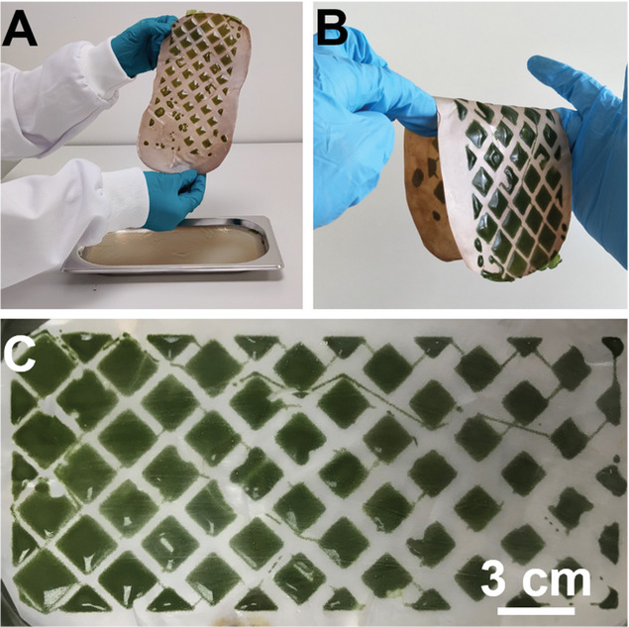Living layers
The search for living materials has entered a new phase. For some time now, researchers have tried to convert the properties of living cells into manageable materials. The following are often mentioned as functional properties: chemical detection, detoxification, and the production of energy or raw materials. However, transferring living cells to a suitable substrate has not really been successful up to now.
Now, in a joint article in Advanced Functional Materials, TU Delft researchers from Applied Sciences and Industrial Design & Engineering (IDE), describe a major step that they have taken. The team led by Dr Marie-Eve Aubin-Tam used an inkjet printer to apply a hydrogel containing micro-algae on a layer of bacterial cellulose. This combines living cells with a solid and flexible substrate that lends itself to numerous applications.
Co-researcher Professor Anne S. Meyer (University of Rochester, USA) sees applications in skin grafting. “The oxygen generated by the algae could help recovery,” she says.
IDE Professor Elvin Karana sees several uses for new photosynthetic and responsive living materials. “We hope that our article will initiate a dialogue between the design and science community, and inspire new directions for research on future photosynthetic living materials.”

Printed algae squares on a bacterial cellulose substrate (Photo from publication)
Do you have a question or comment about this article?
j.w.wassink@tudelft.nl

Comments are closed.